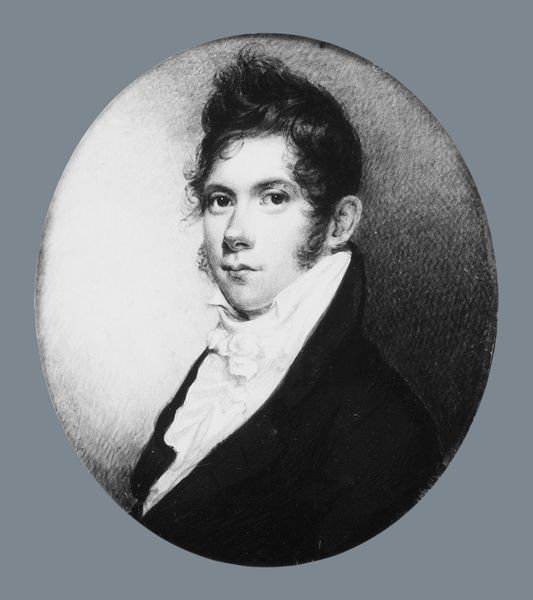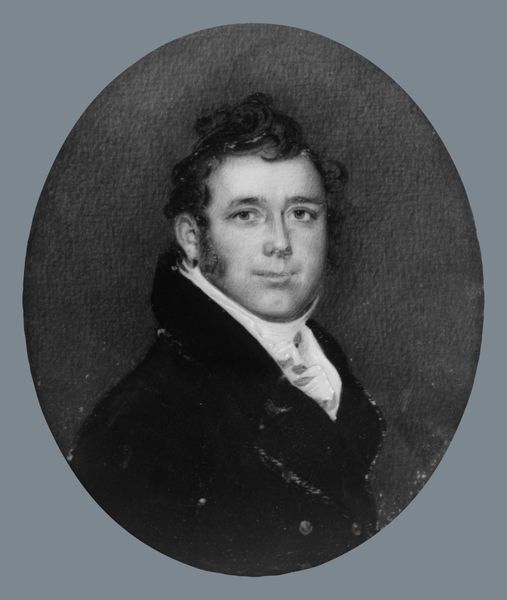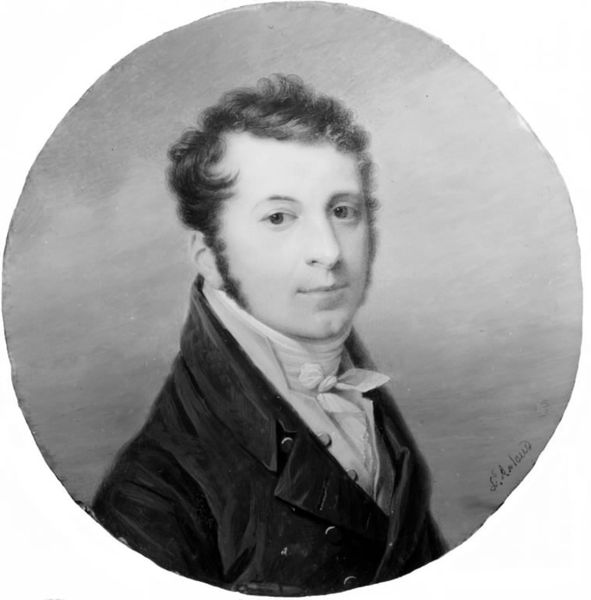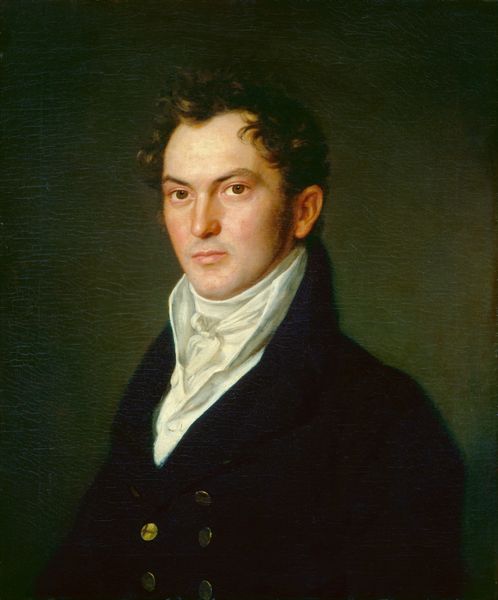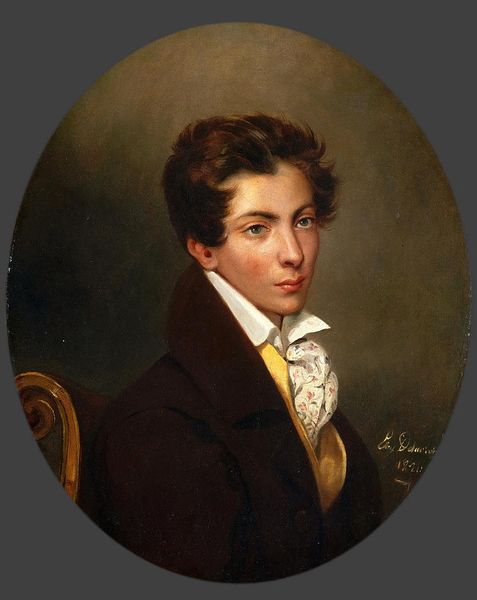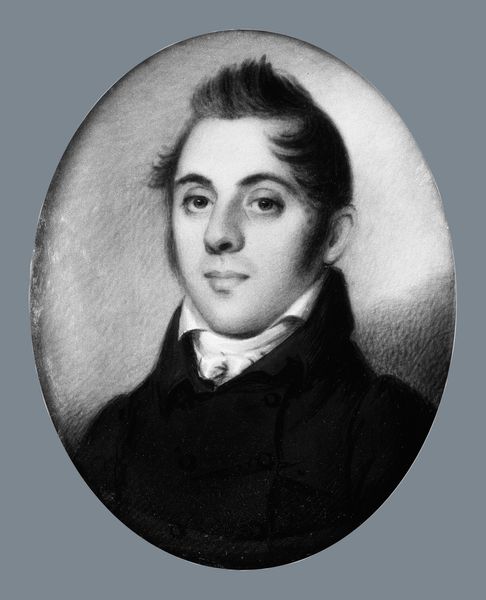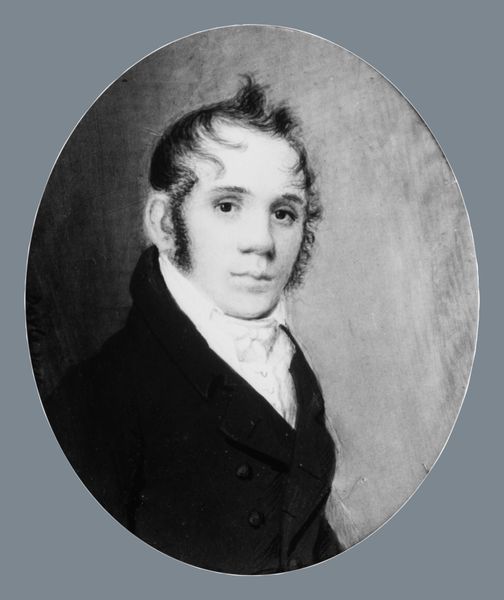
drawing, pencil
#
portrait
#
drawing
#
neoclacissism
#
self-portrait
#
portrait
#
pencil
#
academic-art
Dimensions: 3 x 2 3/8 in. (7.6 x 6 cm)
Copyright: Public Domain
Curator: Here we have John Wesley Jarvis's "Portrait of a Gentleman," a pencil drawing created in 1809. What strikes you upon first viewing? Editor: The almost unsettling stillness, and yet, the slight smirk in the lips. There's a controlled defiance in his gaze. I feel that defiance is probably directed at someone. Curator: It's compelling, isn't it? The oval format and neoclassical style nod to traditional portraiture, emphasizing elegance and order. Do you see any underlying meanings within the neoclassical influence on portraiture during this time? Editor: Absolutely. It represents an assertion of social position but one that is very subtly played out. It comes during an era defined by revolutions, both societal and industrial, and class tension and aspirations toward nobility are very pronounced. Curator: Exactly, and there's also the meticulous rendering. Academic art valued precision and control, aligning with Enlightenment ideals of reason. Think about the cultural and political atmosphere of 1809. This wasn't just about capturing a likeness; it was projecting an image of respectability, stability, even power, especially for men asserting their positions within these turbulent hierarchies. Editor: Yes, it's about the power of representation. Who gets remembered, and how? Even in its subtle defiance, this portrait serves a powerful purpose for the subject: self-fashioning as an arbiter of culture. This is a world on the cusp of massive changes. He probably wants to be viewed favorably when it arrives. Curator: And he's choosing to fashion his self in this classical and controlled way to show the world who he wishes to be and, really, who he likely sees himself as being. How does his neckwear resonate in this context? Editor: With all the deliberate ruffles and careful folds, the neckwear serves to elevate him by showing his careful curation of appearance and detail, while at the same time presenting something "refined." Its almost foppish and serves as a performative barrier between him and whoever has the privilege to look at the portrait. Curator: Yes, it’s a study of how one presents himself and his place. It gives you a sense of the moment's pressures. It's powerful how one's choice to project such order and poise contains such rich insight to that context. Editor: Right, a potent artifact, filled with aspiration and self-preservation. And seeing this drawing from a contemporary lens makes one think how little has changed.
Comments
No comments
Be the first to comment and join the conversation on the ultimate creative platform.
